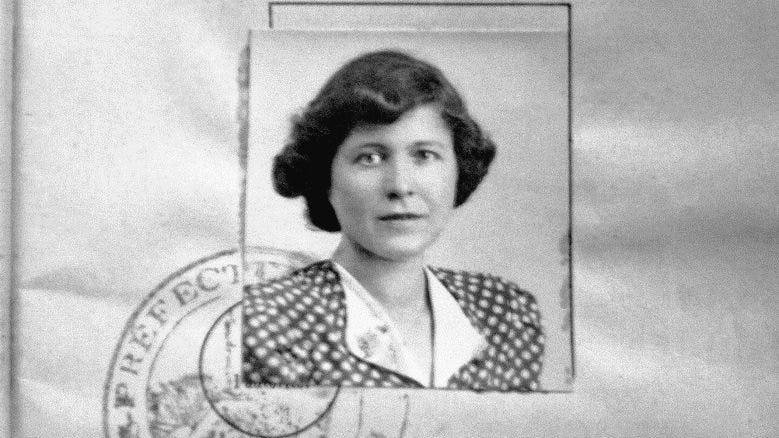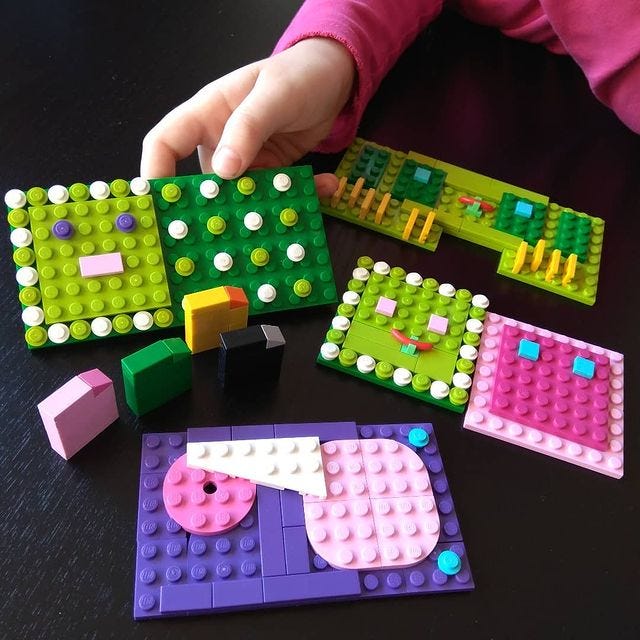No. 34 — Next up: Klári 🔎 The Case of the Slow Websites 🥐 Activités en français
Like a musical instrument
My name is Linda. I write a bi-weekly newsletter about computer science, childhood and culture - and there are 9559 of you listening. If you enjoy this issue, please share it with anyone you think may find it useful.
One of the last books of 2021 I finished was a new biography on the inimitable pioneer of computers, John von Neumann. If there ever was a polymath von Neumann was one and Ananyo Bhattacharya does a wonderful job covering his life and varied interests.
A month later, it is the other Von Neumann I keep thinking about.
My prediction: there is going to be a Netflix-series on the life of Klára Dán von Neumann. Her life was an exclamation mark that lacked neither drama nor historic events.
I met Klára Dán von Neumann already on the pages of Turing’s Cathedral by George Dyson. She was born in Hungary in 1911 and was a figure skater, party maker (“A mulatsag is simply the spontaneous combustion of a bunch of people having a good time” she said), was married four times and had a tragic ending.
But I’m of course most interested in the work she did with ENIAC, one of the worlds first computer.
Klári had no formal training in mathematics, but an inquisitive mind and through Von Neumann access to ENIAC, computer built for war and calculation of ballistic curves.
She began to code additional problems for the machine - first to help with calculations required by the atomic bomb and later with meteorological predictions. She turned the ENIAC from a single-purpose machine to a computer we recognise today.
Historians have recovered pages and pages of code written in Klári’s hand with novel ideas and inventions. Klara herself said she found coding to be a “very amusing and rather intricate jigsaw puzzle.”
From The Man From the Future: “Klári’s 800-command program that ran in April in Aberdeen was used to adjust the composition of atom bombs. Within that program is a ‘closed subroutine’ – a type of loop that is executed whenever it is referenced from the main body of the program. The invention of the closed subroutine is generally credited to computer scientist David Wheeler, but Klári’s code made use of one at least a year earlier, to generate random numbers by von Neumann’s ‘method of middle-squares’.”
In her words: "The older machines could only play one tune … like a music box. In contrast, the ‘all purpose’ machine is like a musical instrument.” A music box! A music instrument! The sound of that.
Right now there exists very little on Klára Dán von Neumann’s life online, but there is an upcoming podcast series about her which I’m very curious about. And this tweet thread by Ananyo is lovely.
Linked List
In computer science, a linked list is a linear collection of data elements whose order is not given by their physical placement in memory. But here it is a selection of things I’ve been reading lately.
I don’t know how I missed this the first time around, but these little point and click adventures by Julia Evans are so good. The Case of the Slow Websites, The Case of the Connection Timeout and The Case of the 50ms Request are like Nancy Drew, but better. Learn through an adventure what network engineers do.
I’m very deep researching material sciences for a piece I’m writing and How to make a CPU made me smile (“Step 1: Get a rock”). If anyone else is curious about semi-conductors and the market, here’s a wonderful list of books I’m working through.
Literary Clock. Displays a literary quote for every minute of the day, taken from books. Someone made a version for e-readers, which I might need to attempt.
Classroom
I’m hoping to surface and share stories from all of you and I’d love to see your creations! Here are a few teachers using Ruby in creative, fun and inspiring ways:


I’ve known the Colori education people for a long time and couldn’t be more excited that they’ve now translated many of the Love Letters activities in French. You can download them for free behind the link (and see a tiny video of me visiting the school in 2019, which feels like a lifetime ago).
What phenomenal hardware design by Anita and her family!



Definitely one of my favorite things to see is how teachers bring their own touch and experience to my books. Drawing themselves as the books main character is such a nice way to get students into the world of Ruby.



